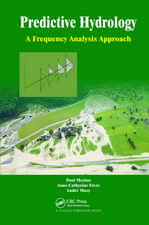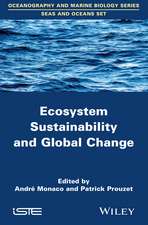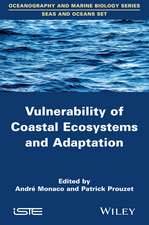Recent Advances in the Modeling of Hydrologic Systems: Nato Science Series C:, cartea 345
Editat de D. S. Bowles, P. Enda O'Connellen Limba Engleză Paperback – 5 noi 2012
Din seria Nato Science Series C:
- 24%
 Preț: 797.69 lei
Preț: 797.69 lei - 18%
 Preț: 957.62 lei
Preț: 957.62 lei - 18%
 Preț: 957.13 lei
Preț: 957.13 lei - 18%
 Preț: 1227.52 lei
Preț: 1227.52 lei -
 Preț: 396.40 lei
Preț: 396.40 lei -
 Preț: 403.75 lei
Preț: 403.75 lei - 18%
 Preț: 1239.37 lei
Preț: 1239.37 lei - 18%
 Preț: 1236.51 lei
Preț: 1236.51 lei - 18%
 Preț: 1231.78 lei
Preț: 1231.78 lei - 18%
 Preț: 1229.10 lei
Preț: 1229.10 lei - 18%
 Preț: 1835.21 lei
Preț: 1835.21 lei - 24%
 Preț: 1076.39 lei
Preț: 1076.39 lei -
 Preț: 390.46 lei
Preț: 390.46 lei -
 Preț: 369.63 lei
Preț: 369.63 lei - 18%
 Preț: 1232.41 lei
Preț: 1232.41 lei -
 Preț: 394.51 lei
Preț: 394.51 lei - 18%
 Preț: 1226.24 lei
Preț: 1226.24 lei - 18%
 Preț: 1845.80 lei
Preț: 1845.80 lei -
 Preț: 399.88 lei
Preț: 399.88 lei -
 Preț: 384.28 lei
Preț: 384.28 lei -
 Preț: 390.88 lei
Preț: 390.88 lei -
 Preț: 381.19 lei
Preț: 381.19 lei - 18%
 Preț: 1848.64 lei
Preț: 1848.64 lei - 18%
 Preț: 951.14 lei
Preț: 951.14 lei - 18%
 Preț: 1230.35 lei
Preț: 1230.35 lei - 18%
 Preț: 1236.51 lei
Preț: 1236.51 lei -
 Preț: 401.03 lei
Preț: 401.03 lei -
 Preț: 406.25 lei
Preț: 406.25 lei - 18%
 Preț: 1230.84 lei
Preț: 1230.84 lei -
 Preț: 418.34 lei
Preț: 418.34 lei - 18%
 Preț: 1223.74 lei
Preț: 1223.74 lei
Preț: 410.46 lei
Nou
Puncte Express: 616
Preț estimativ în valută:
78.57€ • 85.37$ • 66.04£
78.57€ • 85.37$ • 66.04£
Carte tipărită la comandă
Livrare economică 21 aprilie-05 mai
Preluare comenzi: 021 569.72.76
Specificații
ISBN-13: 9789401055383
ISBN-10: 9401055386
Pagini: 684
Ilustrații: XIII, 667 p.
Dimensiuni: 155 x 235 x 36 mm
Greutate: 0.94 kg
Ediția:Softcover reprint of the original 1st ed. 1991
Editura: SPRINGER NETHERLANDS
Colecția Springer
Seria Nato Science Series C:
Locul publicării:Dordrecht, Netherlands
ISBN-10: 9401055386
Pagini: 684
Ilustrații: XIII, 667 p.
Dimensiuni: 155 x 235 x 36 mm
Greutate: 0.94 kg
Ediția:Softcover reprint of the original 1st ed. 1991
Editura: SPRINGER NETHERLANDS
Colecția Springer
Seria Nato Science Series C:
Locul publicării:Dordrecht, Netherlands
Public țintă
ResearchCuprins
I - Introduction.- 1. A Historical Perspective.- 2. Hydrology: Infusing Science into a Demand-Driven Art.- II - State-of-the-Art in Modeling Individual Components of the Hydrologic Cycle.- 3. Hydrologic Advances in Space-Time Precipitation Modeling and Forecasting.- 4. The Formulation of Evaporation from Land Surfaces.- 5. Physics-Based Models of Snow.- 6. A Physically Based Snowcover Model.- 7. Infiltration, Soil Moisture, and Unsaturated Flow.- 8. Overland Flow: A Two-Dimensional Modeling Approach.- III - State-of-the-Art in Modeling Linked Components of the Hydrologic Cycle.- 9. Real Time Coupling of Hydrologic and Meteorological Models for Flood Forecasting.- 10. Modeling of Saturated Flow and the Coupling of Surface and Subsurface Flow.- 11. Environmental Features Important in Nonpoint Source Models - Microclimatology.- 12. Environmental Features Important in Nonpoint Source Models - Crop Growth and Influence of Management on Soil Properties.- 13. Framework for Erosion and Sediment Yield Modeling.- 14. Integrated Quantity/Quality Modeling - Root Zone Leaching.- 15. Integrated Quantity/Quality Modeling - Receiving Waters.- IV - Current Modeling Issues.- 16. Scale Considerations.- 17. Spatially Distributed Modeling: Conceptual Approach to Runoff Prediction.- 18. Hydraulic and Hydrologic Flood Routing Schemes.- 19. OMEGA: Impact of Spatial Variability of Infiltration Parameters on Catchment Response.- 20. Parameter Estimation, Model Identification, and Model Validation: Conceptual-Type Models.- V - Current Technological Trends.- 21. Recent Advances and Future Implications of Remote Sensing for Hydrologic Modeling.- 22. The Impact of ESPRIT Projects upon the Modeling of Hydrologic Systems.- 23. Contributions of Computational Hydraulics to the Foundation of a Computational Hydrology.- VI - Synthesis of Hydrologic Models for Different Physical Settings and Various Applications.- 24. Problems of Runoff Modeling Which are Particular to the Area or Climate Being Modeled.- 25. Comparison of USGS and HEC-1 Kinematic Wave Runoff Models.- 26. Hydrologic Modeling for Water Resources Planning.- 27. Learning by Parametric Modeling: Hydrologic Investigations of Utah Mountain Catchments.- VII - Relationship of Experimental Studies and Hydrologic Modeling.- 28. Mathematical Models: Research Tools for Experimental Watersheds.- 29. Numerical Simulations and Field Experiments of Unsaturated Flow and Transport: The Roles of Hysteresis and State-Dependent Anisotropy.- Appendix - Other Presentations Given at the NATO ASI.
Recenzii
'This book offers a wealth of information to anyone seeking a survey of the state of the hydrologic modeling disciple in the research community in the late 1980s...The book is an excellent source of information for students seeking topics that may prove worthy of further research and study. Practitioners of hydrology would also benefit from exposure to the activities at the leading edge of their filed of interest. It also serves as a means of introducing people to aspects of hydrology that are outside their editors are to be commended for their efforts in presenting this material to the hydrologic community.' Bulletin American meteorological Society 73:12 1992








